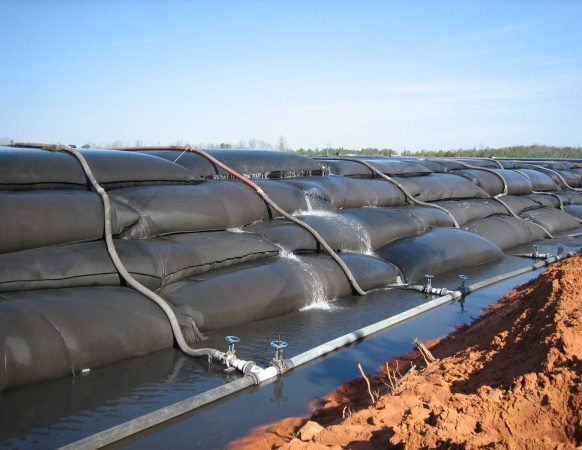Context:
A recent study conducted by the National Institute of Ocean Technology (NIOT) and the Kerala State Coastal Area Development Corporation (KSCADC) has found that geotubing technology is highly effective in controlling coastal erosion. The study was conducted at Poonthura coast in Thiruvananthapuram, Kerala, where a unique offshore breakwater system using geotube technology was installed.
About Geotubing Technology:
- Geotubing involves the use of large, durable fabric tubes filled with sand or slurry, placed strategically along or off the coast. These structures serve as underwater barriers that absorb and dissipate the energy of incoming waves, significantly reducing their erosive impact on the shoreline. As wave energy diminishes, sediment carried by the sea is deposited, leading to the accumulation of sand and the formation of a broader, more stable beach.
- Unlike conventional hard structures such as concrete seawalls and rock armors, geotubes are cost-effective, flexible, and environmentally adaptive, making them especially suitable for dynamic coastal environments.
Implications for India’s Coastline:
According to estimates, 33.6% of India’s coastline is vulnerable to varying degrees of erosion. In this context, the success of the geotubing project is significant. It not only demonstrates a viable engineering solution but also reflects the growing shift towards nature-based and sustainable coastal management practices.
Government Initiatives and Mitigation Measures for Coastal Erosion in India:
India, with a coastline stretching over 7,500 kilometers, faces increasing threats from coastal erosion, sea-level rise, and climate-induced changes. In response, both central and state governments have launched a series of policy-driven and scientific initiatives aimed at coastal protection, sustainable development, and community resilience.
1. Integrated Coastal Zone Management Project (ICZMP)
- Objective: To protect and sustainably manage coastal and marine ecosystems while supporting the livelihoods of coastal communities.
- Implementation: Supported by the World Bank, the project is operational in Gujarat, Odisha, and West Bengal under Phase I, with future expansions planned for other states.
2. Coastal Regulation Zone (CRZ) Notification, 2019
- Issued by: The Ministry of Environment, Forest and Climate Change (MoEFCC).
- Aim: To balance coastal conservation with developmental needs and livelihood security.
- Major Provisions:
- Establishment of No Development Zones (NDZs) in ecologically sensitive areas.
- Regulation of construction and industrial activities along the coast.
- Encouragement of erosion control measures using sustainable technologies.
- Inclusion of tools like the Shoreline Management Plan (SMP) and Coastal Zone Management Plan (CZMP) for long-term planning.
Conclusion:
The geotubing project can serves as a model for erosion-prone coastal regions across India and beyond. By blending innovative engineering with environmental sensitivity, geotubing technology offers a new frontier in coastal resilience, one where the natural dynamics of the ocean are harnessed rather than resisted.







